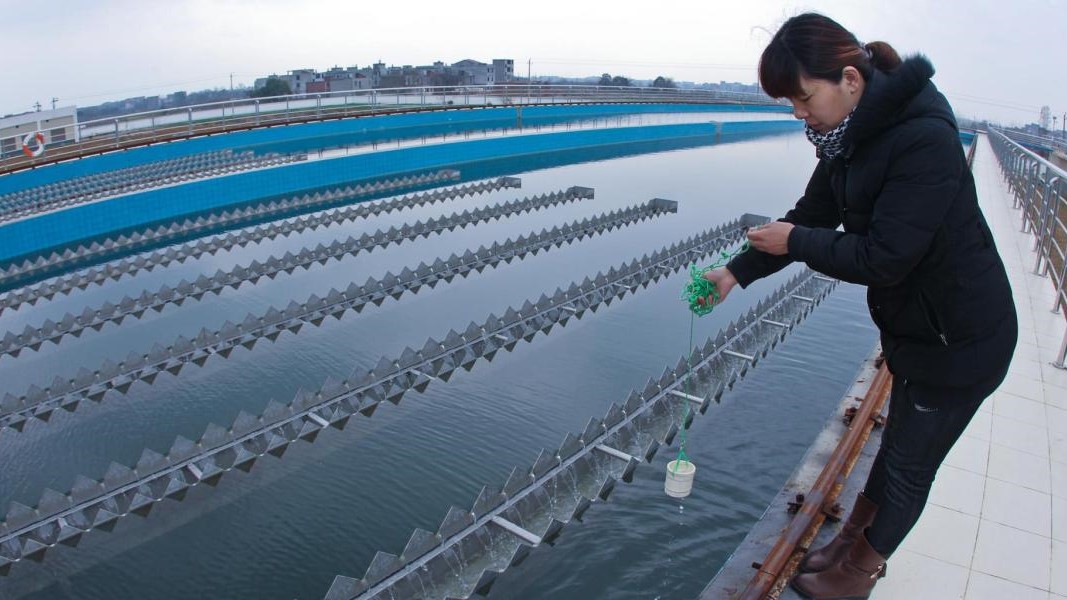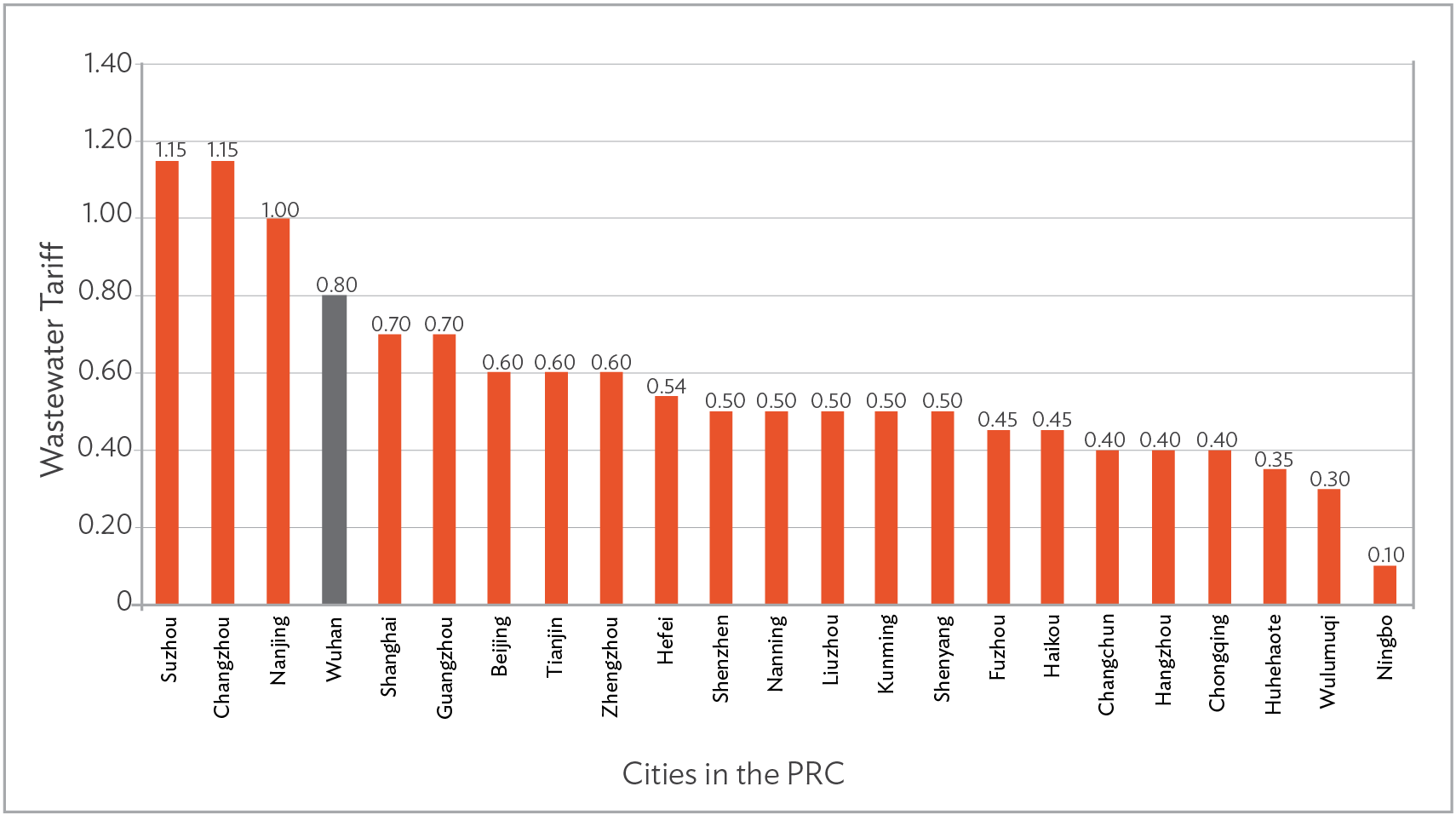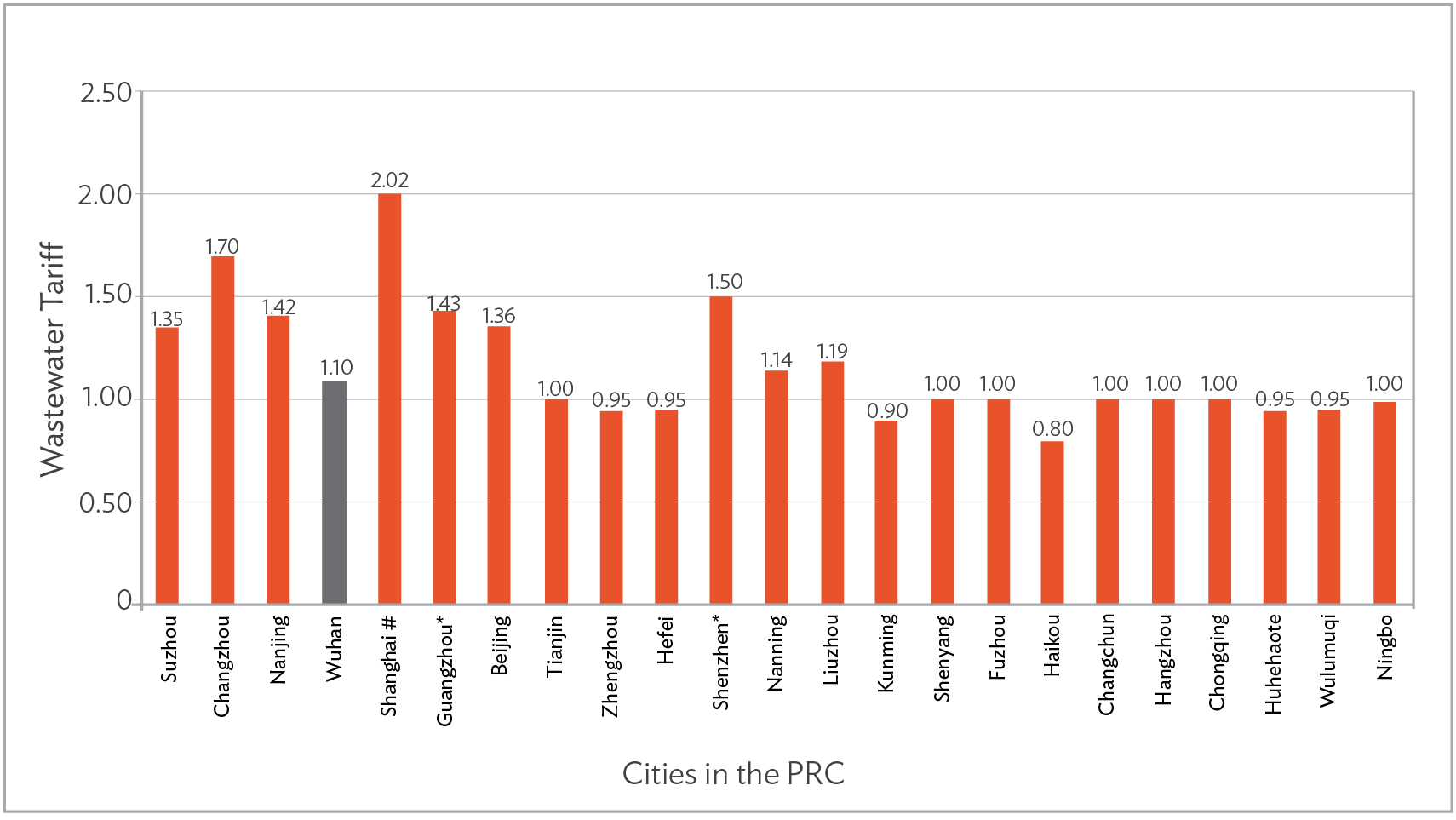Methodologies. For each of the five wastewater treatment plants for the project, a financial cost–benefit analysis was conducted in real terms to determine weighted average cost of capital (WACC), financial internal rate of return (FIRR), and other indicators to assess financial viability of each plant (or subproject) and the incremental tariff required. For the three wastewater treatment plants in the central urban area, the incremental wastewater tariff assumed in the financial cost–benefit analysis was added to the existing wastewater tariff of 0.80 yuan/m3 in Wuhan, which will be levied on top of the water sold in the central urban areas, to arrive at the projected total wastewater tariff revenues for the implementing agency. For the two suburban wastewater treatment plants in Dongxihu and Caidian, which have different and much lower tariffs, the same financial cost–benefit analyses were conducted.
The wastewater tariffs in real terms used in the financial cost–benefit analysis for each of the five wastewater treatment plants were converted into nominal terms, and pro forma financial statements for each plant were separately prepared, projected, and analyzed.
Historical financial statements of WDC, the implementing agency for five wastewater subprojects, were analyzed, and projections were made. Financial statement projections, including income statement, balance sheet, and cash flow statement, were prepared in nominal price terms for a scenario without the project, taking into account major capital expenditures, associated operation and maintenance (O&M) costs, and other related costs and arrangements. Pro forma financial statement projections for the five wastewater treatment plants were consolidated into the financial statement projections for WDC for a scenario with the project.
The financial statement projections for WDC were prepared in nominal price terms and included inflation-adjusted costs and revenues for each year from 2006 to 2018. The consolidated financial statement projections were made to forecast the financial performance of the implementing agency, to assess profitability and debt service ability, and to test the tariff required for WDC to raise funds for project construction and achieve full cost recovery during operation.
Each wastewater treatment plant, or subproject, would normally require relatively higher incremental tariff, and different wastewater treatment plants would demand different tariff increases. All these needed to be tested in the whole system through the financial statement projections for WDC with due consideration to the tariff practice in Wuhan. Return on equity for WDC, based on the proposed tariff increase, would range from 6.0% to 21.4% during the project implementation until 2010 and from 4.3% to 7.5% when the project was operational from 2011 to 2018.
Further assessments and policy dialogue. The tariff arrived from the above analyses still cannot fully justify a proposed tariff increasing plan. Further assessments were needed, such as on customers’ willingness to pay the higher tariff and an affordability analysis. Pro-poor arrangements for urban poor households needed to be in place as well as measures to draw feedback on the planned increase and build public support for it.
Nonrevenue water (NRW), both technical loss and nontechnical loss, are important factors impacting the implementing agency’s financial performance. Reduced NRW due to improved engineering and tariff revenue collection had been assessed and incorporated into the financial cost–benefit analysis and the WDC’s financial statement projections.
For the Wuhan project, policy dialogue with government was proposed to support a realistic tariff reform program. Based on the analyses and assessments, it was recommended that wastewater tariff be increased in 6 years to 1.00 yuan/m3 from the current 0.80 yuan/m3.
Improved public awareness of the benefits accruing from effective drainage and treatment of wastewater significantly enhanced users’ willingness to pay wastewater charges. Socio-economic surveys undertaken during the loan processing indicated a significantly higher level of public willingness to pay, a positive indicator of public support for the project.
The tariff levels based on the principles of full cost recovery would enable WDC to become a financially autonomous and sustainable entity, and the availability of adequate funds for loan repayment, operations and maintenance, and eventual replacement of project facilities would be assured.
Findings in Project Completion Report by August 2015. The Wuhan Municipal Government held a public hearing on the tariff increase. Delayed by 2 years, the wastewater tariff was increased to 1.1 yuan/m3 in 2014 for urban residents, higher than suggested by ADB. The WDC complied with all financial covenants, which includes that “wastewater tariffs charged by WDC be set at a level that ensures cost recovery of operation and maintenance, depreciation and financial costs including the debt service obligations, and a reasonable profit margin for WDC.” The project is rated likely sustainable. Although there was delayed implementation for 1 WWTP, “the urban wastewater treatment rate in Wuhan reached 92.4% in 2010 and 93% in 2013.”
Current Water Tariff in Wuhan and Wastewater Tariff among Cities. The current water tariff in Wuhan is presented in Table 2.






